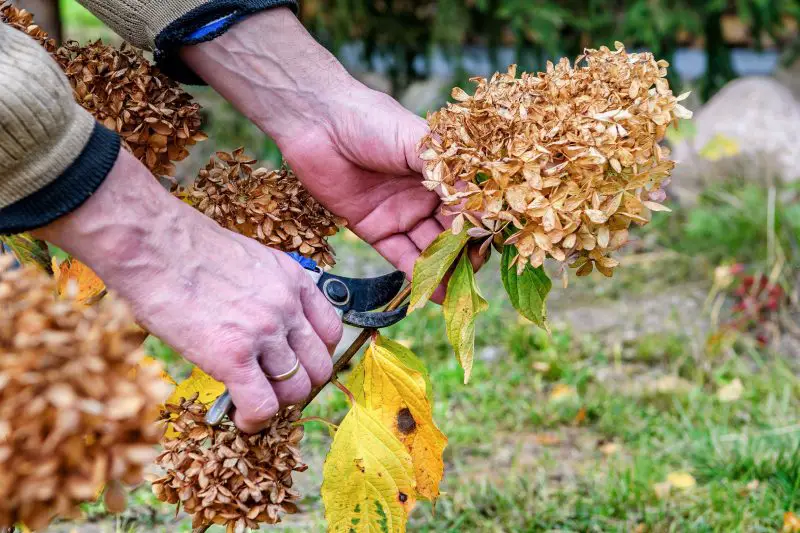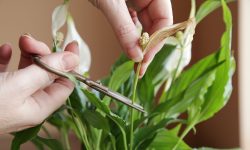Hydrangeas are among the most beloved flowering shrubs in home gardens, known for their large, colorful blooms and lush foliage. However, when the blooming season ends and cooler temperatures arrive, many gardeners are left wondering: Do you cut down hydrangeas in the fall or wait until spring? This question has a significant impact on the plant’s health, growth, and flowering performance in the coming year. Pruning at the wrong time can reduce blooming or even damage the plant, depending on the hydrangea type. To make the best decision for your garden, it’s crucial to understand your specific variety, its blooming habits, and the principles of seasonal care.
Understanding the right time to cut back hydrangeas depends not only on climate and growing zones but also on the plant’s growth cycle. While fall pruning might seem like a good idea for tidiness, it’s not always beneficial. Some hydrangeas develop flowers on old wood formed the previous year, while others bloom on new wood from the current season. Knowing the difference helps avoid common pruning mistakes that can delay or prevent flowering altogether. By learning how to care for hydrangeas through the seasons, gardeners can ensure these plants continue to flourish year after year.
This article will explore the science behind hydrangea growth patterns, explain why timing matters in pruning decisions, and offer season-specific guidance. Whether you’re a new gardener or someone looking to refresh their knowledge, you’ll find everything you need to confidently care for your hydrangeas through the fall and into spring.
The Importance of Knowing Your Hydrangea Type

Before making any pruning decision, identifying the hydrangea variety in your garden is essential. Hydrangeas fall into several common species, each with different growth and blooming characteristics. Some of the most popular types include Hydrangea macrophylla (bigleaf), Hydrangea paniculata (panicle), Hydrangea arborescens (smooth), and Hydrangea quercifolia (oakleaf). These varieties respond differently to pruning based on whether they bloom on old or new wood.
Bigleaf and oakleaf hydrangeas typically bloom on old wood. This means their flower buds form in late summer or early fall of the previous year. Pruning them in the fall can remove next season’s flower buds, leaving you with a green but bloomless plant come spring. In contrast, panicle and smooth hydrangeas bloom on new wood, which develops in spring. These types can tolerate fall or early spring pruning without affecting their blooming performance.
Understanding your hydrangea’s flowering behavior sets the stage for pruning success. Once you’ve identified whether your hydrangea blooms on old or new wood, you can begin planning appropriate seasonal care that aligns with the plant’s natural cycle.
What Happens to Hydrangeas in the Fall
As summer draws to a close and temperatures begin to cool, hydrangeas enter a transitional phase. The vibrant blooms begin to fade, leaves may change color, and the plant gradually prepares for dormancy. During this period, energy is redirected from flowers and foliage to the roots, where it is stored for the next growing season. This dormancy process is critical for plant survival and healthy growth in spring.
Fall is also when certain hydrangeas start forming buds for the next year’s flowers. These buds remain dormant over the winter and open in spring. If you prune during this phase, especially for old-wood bloomers, you risk cutting away next year’s potential blooms. For this reason, many gardeners choose to avoid pruning in the fall unless they’re dealing with damaged, diseased, or dead branches.
While it may be tempting to tidy up the garden by cutting down spent stems, it’s important to consider the long-term impact. The natural dieback of foliage provides a protective layer around the base of the plant, shielding roots from temperature extremes. Unless necessary, fall pruning should be approached with caution, especially for varieties sensitive to early cuts.
Reasons Why Fall Pruning Might Be Harmful
Fall pruning often appeals to gardeners seeking a neat appearance for their landscape. However, this practice can backfire if not timed correctly. One of the main concerns is the potential removal of flower buds, particularly for hydrangeas that bloom on old wood. These buds are already in place by fall, and any pruning that cuts into these stems will eliminate the chance for blooms in the upcoming season.
Another risk involves encouraging new growth late in the season. Cutting back hydrangeas in the fall can stimulate fresh shoots, which are vulnerable to winter damage. These new stems won’t have enough time to harden off before freezing temperatures arrive, making them more likely to die back. This loss not only weakens the plant but can also make it more susceptible to disease and pests.
In addition to bloom loss and winter injury, fall pruning disrupts the plant’s natural dormancy process. The stress caused by pruning at this time can compromise energy storage, which plays a key role in the hydrangea’s spring revival. For these reasons, pruning should be limited to removing clearly dead or broken stems and not involve shaping or cutting the plant to the ground.
When Spring Pruning Is a Better Option
Spring provides a more favorable environment for pruning hydrangeas, particularly for those that bloom on new wood. As the plant begins to emerge from dormancy, it’s easier to identify which stems are viable and which are dead. This allows for more targeted pruning that encourages healthy new growth while preserving blooming potential.
For panicle and smooth hydrangeas, spring pruning is often recommended and even beneficial. Since these varieties form blooms on the current season’s growth, cutting them back in late winter or early spring can promote larger and more abundant flowers. Gardeners can also use this opportunity to shape the plant and control its size, leading to a more attractive landscape display.
Timing is essential in spring pruning. Waiting until after the last frost ensures that tender new shoots are not damaged by unexpected cold snaps. Once the risk of frost has passed, you can confidently remove old stems, trim back to strong buds, and shape the shrub. This method supports vigorous growth while protecting the plant from unnecessary stress.
Hydrangea Varieties and Their Pruning Needs
Each hydrangea species has a preferred pruning schedule, and recognizing this helps avoid common mistakes. Bigleaf hydrangeas, including the popular mophead and lacecap types, bloom on old wood and should generally not be pruned in fall or early spring. If shaping is necessary, it should be done immediately after blooming in summer, before buds form for the following year.
Smooth hydrangeas such as ‘Annabelle’ bloom on new wood and benefit from spring pruning. Cutting them back to the ground in early spring encourages strong stems and full blooms. Panicle hydrangeas like ‘Limelight’ also respond well to spring pruning and can be trimmed back without sacrificing flowers. Oakleaf hydrangeas, which offer distinctive foliage and cone-shaped blooms, prefer minimal pruning and are best left alone except for deadheading or removing damaged stems.
Gardeners in colder climates may see natural dieback on some varieties during the winter. In these cases, spring pruning can involve cutting back only to where new green growth appears. By understanding each variety’s specific needs, you can time your pruning for maximum effectiveness and floral beauty.
Climate and Zone Considerations
Regional climate plays a significant role in deciding when to prune hydrangeas. In colder USDA hardiness zones, fall temperatures can drop quickly, increasing the risk of winter damage. In these regions, leaving stems intact through the winter offers a form of insulation and prevents cold air from reaching the crown. Mulching around the base of the plant adds another layer of protection.
In milder climates, where winters are less severe, gardeners may be tempted to prune in fall. However, even in warm areas, old-wood blooming varieties should be pruned after flowering in summer to avoid cutting off next year’s buds. Spring remains the safest choice for most pruning, as it allows plants to recover and grow in more stable conditions.
Whether you’re gardening in Zone 5 or Zone 9, timing your pruning based on both the hydrangea type and your local weather patterns leads to better outcomes. Keeping an eye on long-range forecasts and frost dates can help you decide the best window for any pruning activity.
How to Tell If Your Hydrangea Needs Pruning
Not every hydrangea needs to be pruned annually. In many cases, these shrubs perform beautifully with minimal intervention. Signs that your plant may benefit from pruning include overcrowded stems, dead or diseased branches, and reduced blooming performance. If your hydrangea appears healthy and blooms well year after year, you may only need to deadhead spent flowers or remove weak growth.
Assessing your hydrangea’s overall structure can also guide your pruning decisions. A well-shaped plant allows better air circulation and light penetration, which reduces the risk of fungal disease and promotes healthier blooms. Pruning for shape and balance is typically best done during the recommended window for your hydrangea type, and never during extreme heat or cold.
By observing your hydrangea’s habits and growth patterns, you can tailor your care strategy. Rather than following a rigid pruning schedule, responding to your plant’s condition ensures it continues to thrive.
What About Deadheading in the Fall?
Deadheading, or removing spent flower heads, is a light pruning technique that’s generally safe for all hydrangea types. In the fall, this practice can improve the shrub’s appearance and redirect energy to the roots. However, it’s important not to cut too deeply into the stem, especially for old-wood bloomers. Snipping just below the faded flower allows you to tidy the plant without disturbing developing buds.
Some gardeners prefer to leave the dried flower heads on the plant through winter. These faded blooms add visual interest to the winter landscape and may offer some protection to the buds below. Come early spring, they can be removed cleanly without affecting the plant’s flowering potential.
Deadheading is a useful compromise for gardeners who want a neater garden without risking damage to next year’s growth. It also gives you a chance to inspect the plant closely and monitor its transition into dormancy.
FAQ About Cutting Down Hydrangeas in the Fall
Do all hydrangeas need to be pruned in the fall?
No, most hydrangeas do not need fall pruning. In fact, pruning in the fall can remove flower buds for the next season, especially in varieties that bloom on old wood. Only remove dead or damaged branches if necessary.
What happens if I cut my hydrangeas back too early in the fall?
Cutting back hydrangeas too early can lead to bloom loss and stimulate tender new growth that may not survive winter. This weakens the plant and affects its performance in the next growing season.
Is it better to prune hydrangeas in the spring instead of fall?
Yes, spring is generally the better time for pruning, especially for varieties that bloom on new wood. Spring pruning encourages fresh, healthy growth and avoids damage to flower buds.
Can I cut off dead hydrangea blooms in the fall?
Yes, deadheading faded blooms is safe in the fall, as long as you don’t cut into the stem too deeply. This helps tidy the plant without interfering with next year’s flowering.
How can I tell what type of hydrangea I have before pruning?
Identifying your hydrangea type involves looking at its flower shape, bloom time, and growth habit. Mophead and lacecap varieties usually bloom on old wood, while panicle and smooth types bloom on new wood. Knowing this is essential before pruning.
Final Thoughts on Fall vs. Spring Pruning
Deciding whether to cut down hydrangeas in the fall or wait until spring depends on the plant’s variety, local climate, and overall condition. While fall pruning may seem appealing for garden maintenance, it carries risks—especially for varieties that bloom on old wood. For most gardeners, spring is a safer and more effective time to prune, particularly for hydrangeas that bloom on new growth.
Knowing your hydrangea species and understanding its blooming cycle are key factors in making smart pruning decisions. With the right timing and techniques, you can preserve next year’s flowers, encourage healthy growth, and keep your landscape looking beautiful.
If you’re ever in doubt, err on the side of caution. Minimal pruning and careful observation can go a long way in maintaining a healthy, thriving hydrangea. By working with the natural rhythm of your plants, you’ll enjoy vibrant blooms season after season without the risk of over-pruning at the wrong time.






